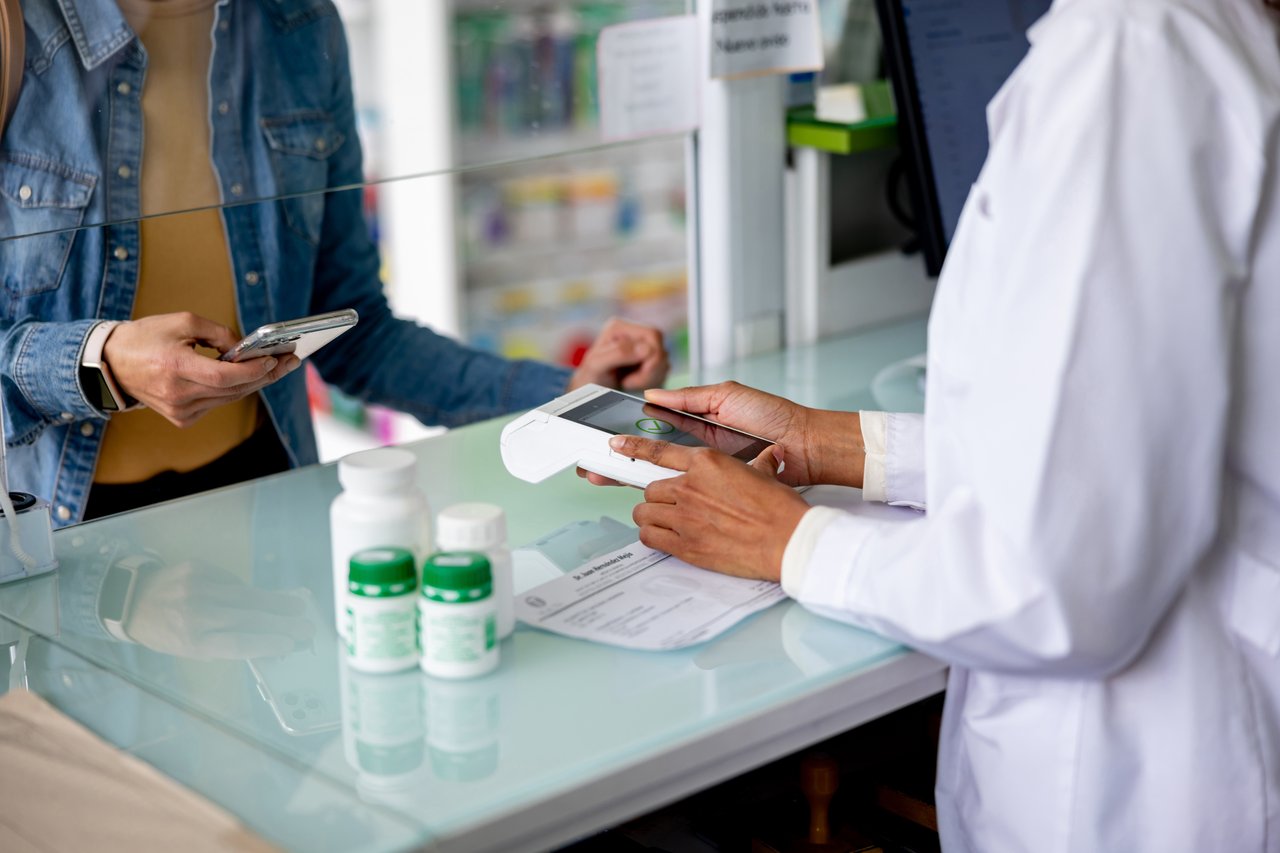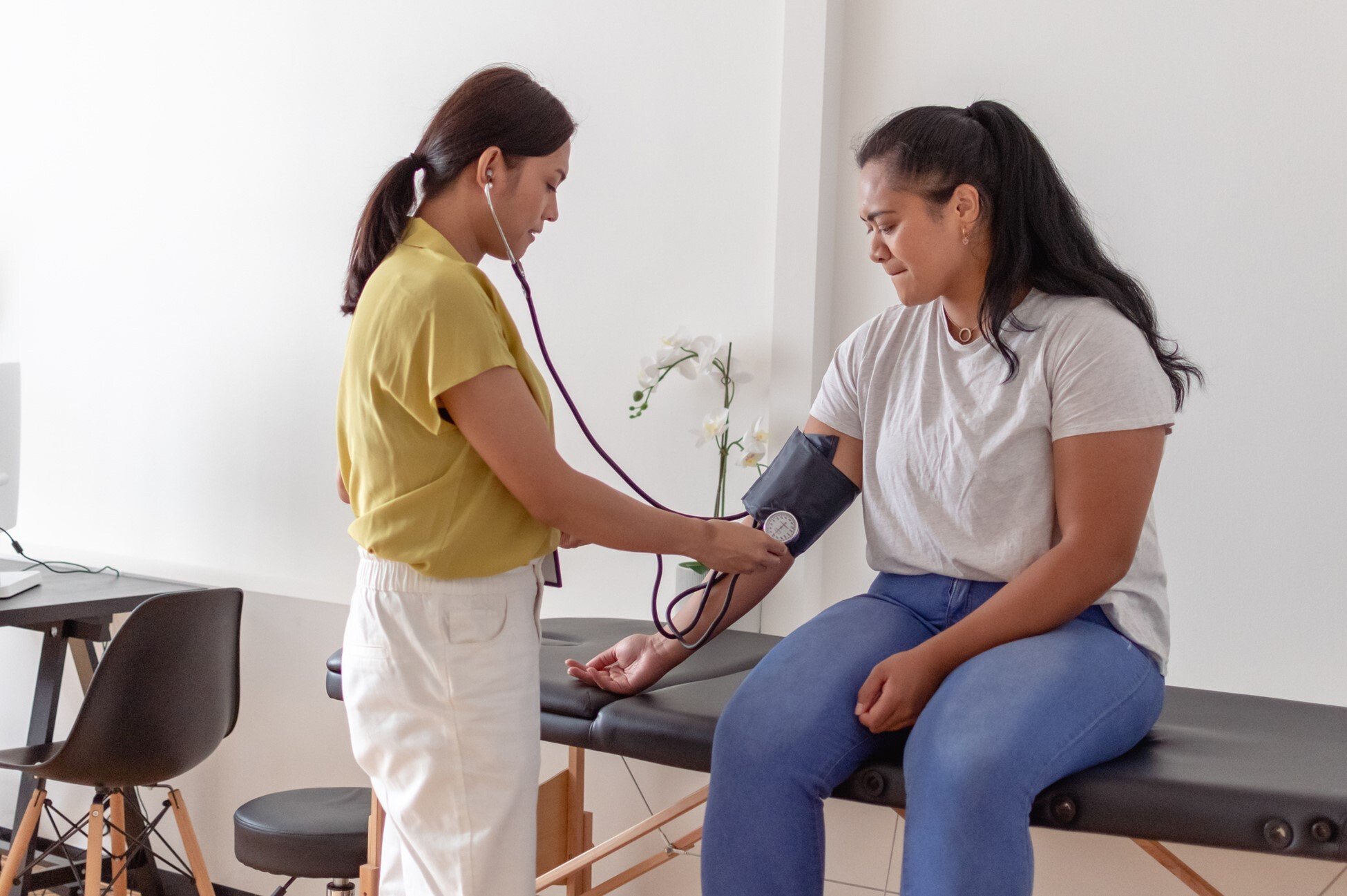The Benefits of Strong Medication Adherence Programs

Medication adherence is complex, with many moving parts to ensure medications are being taken appropriately by patients. Non-adherence leads to many issues, often resulting in increased morbidity and mortality, greater use of emergency healthcare services, hospitalization and poorer long-term health outcomes.
Medication non-adherence is preventable. However, based on recent data, current strategies employed by health plans are not fully achieving desired goals. In order to improve poor medication adherence to therapies, lower healthcare costs, and improve patient health outcomes, plans need to work strategically with healthcare teams such as pharmacies by leveraging patient-specific data that addresses their unique adherence challenges.
We sat down with Matthew Simmons, Product Manager at Outcomes®, to discuss the issue of non-adherence and what payers can do to improve these numbers and help more patients.
Understanding Causes of Medication Non-Adherence
Medication non-adherence is not a clear-cut issue. The social determinants of health (SDOH)—factors such as food, housing and transportation issues—along with other individual concerns—such as cultural and language barriers, race, age, gender and health literacy—significantly influence adherence. Social determinants influence chronic disease prevalence and people's ability to manage their own conditions. For example, a study published in the International Journal of Environmental Research and Public Health found food insecurity, poverty and weak social support systems increased non-adherence among Medicare patients with hypertension.
If a payer doesn't know the underlying cause of non-adherence or is offering generalized adherence solutions that don't address individual patient barriers, the solution is unlikely to convince a patient to take their medication as prescribed. Conversely, pinpointing the exact cause of non-adherence can enable health plans to develop patient-centric solutions that deliver the right message at the right time to positively influence adherence.
Patient non-adherence is also connected to provider and health care system challenges. Lack of access to healthcare providers, fragmented care coordination, provider time constraints and ineffective communication by providers regarding treatment plans all impact adherence negatively.
As Matthew Simmons says, "plans regularly use a one to many approach to achieve their adherence goals. This means identifying one solution with proven value and applying it to as many patients to realize their adherence goals." And data shows these types of solutions do work, though this strategy alone can leave gaps. "In today's competitive payer landscape, plans need to utilize patient-specific one-to-one strategies that support the patient on their health journey and yield consistently high four- and five-star performance ratings," says Simmons.
The Outcomes suite of payer-based solutions offers multiple pathways through pharmacy network partnerships to help health plans achieve their performance and quality goals. By utilizing Outcomes payer solutions, plans can realize cost savings and develop strategies to strengthen patient-focused adherence targets that incorporate targeted interventions to achieve their desired Star Ratings goals.
Benefits of Partnerships to Improve Medication Adherence
Pharmacists have distinct advantages in offering medication-related education and positive adherence messaging in today's changing healthcare environment. Their increased visibility and easy access have highlighted their value as trusted participants in patients' health and wellness journeys. Pharmacist-led interventions such through medication therapy management (MTM) have proven benefits in raising disease awareness and improving medication adherence. Pharmacists are a perfect health partner for payers to achieve their adherence targets.
Payer-pharmacy collaborative alliances are also essential for optimizing patient care, lowering healthcare costs and improving outcomes. Pharmacists have 10 times more interactions with patients than any other healthcare provider. This allows them greater opportunities to answer patient questions about their medications and customize education to reduce barriers while empowering them to stick with their therapy.
For example, when a patient new to hypertension therapy may not fully understand the benefits of their medication, may have anxieties about side effects, or if they've had limited interaction with their doctor, this is an ideal time for a pharmacist to engage the patient. The pharmacist can discuss their condition, offer adherence tips and ask about their interest in joining an adherence monitoring program to proactively avert non-adherence long term. Outcomes data indicates that direct communication between pharmacists and patients ensures 91% of patients new to a medication regimen pick up their first prescription. In the end, payers benefit, too.
Value of Outcomes Solutions
The Outcomes Adherence Monitoring Program has demonstrated improvement in payer adherence rates by implementing both short-term and long-term strategies to help plans achieve annual performance ratings goals. The program has delivered an average increase of 11% in adherence rates. More specifically, use of the program increased diabetes adherence rates by nearly 18%, hypertension by 21% and statin therapy by over 16%.
"These results are powered by Outcomes' clinical platform, OutcomesOne (formerly Connect™), where the goal is for programs to offer clinicians specific information about a patient's adherence journey when they engage patients one on one. It prompts them to initiate a conversation with the patient while allowing them to use their clinical judgment to address specific patient concerns to ensure adherence goals are achievable." When a plan works with the Outcomes adherence solution and any proposed interventions are complete, the plan will achieve the chosen TIP net-effective rate. In turn, they'll realize improved the adherence star ratings as well.
Payers that utilize the Outcomes network of pharmacies can leverage proprietary clinical algorithms to harness patient-specific data to select and deliver actionable strategies that are relevant to addressing root causes of non-adherence. This robust interactive partnership between Outcomes and the pharmacy network helps plans achieve high-performance ratings. In 2020, for example, the Outcomes programs provided $738 million of healthcare savings, achieved 4.5 million interventions to lower adherence barriers and addressed 437,000 medication treatment concerns.
The estimated annual cost of prescription drug-related morbidity and mortality resulting from non-optimized medication therapy has been estimated at more than $500 billion, per Pharmacy Times, with more than 275,000 deaths related to non-optimized drug therapy occurring every year.
The Challenges of Medication Adherence
Medication adherence is one of the most difficult challenges faced by community pharmacists. There are many reasons patients do not or cannot comply with their medication schedules, and pharmacists are their main line of defense and communication to fight against adverse outcomes.
One of the most impactful things a community pharmacy can do is create a medication adherence program to assist patients in understanding and complying with their medication regimens. Adherence not only reduces morbidity but can significantly lower costs of patient care and improve public health, according to the Centers for Disease Control and Prevention.
What is a medication adherence program?
A medication adherence program is a method of helping educate, inform and motivate patients in relation to their medication schedule(s). Since patient compliance is one of the biggest variables in patient outcomes, being able to help individuals appropriately manage their medications is key to preventing unnecessary hospital visits, complications of chronic conditions, or even death.
Who needs help with medication adherence?
- Anyone who struggles with medication schedule compliance is a good candidate for a medication adherence program. This can include:
- An elderly patient who may forget to take a prescription medication
- Anyone with a chronic condition like diabetes
- Someone who is on multiple medications
- Managing elderly patients with chronic conditions and/or multiple medications
The intersection of these patient populations is where the most risk lies if medication adherence is not achieved. Community pharmacists, particularly in rural areas, often have many such patients turning to them for help and are ideally situated to help manage patient care through a medication adherence program.
Why do patients fail at medication adherence?
The National Community Pharmacists Association noted in their highly publicized “Medical Adherence Report Card” that patients most likely to be non-compliant with their medication regimen were those who lacked a strong relationship with their pharmacist. Their survey revealed that one out of three patients over 40 with a chronic condition rated a D or an F when it came to taking their medications correctly.
There are many reasons a patient may be non-compliant with their medication regimen:
- Forgetfulness due to age or dementia
- Multiple medications with confusing or contraindicatory instructions
- Medications that make the patient feel temporarily worse
- Medications which have side effects that are not well tolerated by the patient
- Costly medications that are difficult or impossible for the patient to afford
- Lack of transportation to get to a pharmacy regularly to pick up refills
- Patient is not properly educated on his or her medication
A medication adherence program can help to address all these obstacles and assist patients in reaching adherence.
How a Medication Adherence Program Works
A medication adherence program is centered around patient education, proactive counseling, and overall synchronization, with the goal of optimizing medication use by patients and reducing medication overuse or underuse.
What are the dangers of medication nonadherence?
Medication non-adherence can lead to uncontrolled chronic conditions leading to complications, worsening of a medical condition, inaccuracies in dosing, and even death through overdose or non-treatment of a critical condition.
For example:
- Diabetics who fail to control their blood sugar can suffer from irreversible vision damage
- Heart patients who fail to follow their medication regimen can suffer a cardiac event
- Patients with multiple medications may find they are ineffective when taken at the wrong time
- Healthcare, patient, and medication synchronization
Working with each patient on a regular basis to review medications and suggest ways to increase adherence can reduce unwanted outcomes. A community pharmacy can work with doctors and patients to help streamline care and synchronize medications to improve compliance.
Pharmacists can help coordinate a patient’s medications to provide single-dose medications that contain multiple prescriptions, instructions on how to utilize a smartphone app to provide reminders, packaging to facilitate easy real-time guidance for daily medications, and medication delivery to cut down on repeated pharmacy visits.
Medication Adherence Program Administration
Medication adherence programs can be set up and run by a variety of institutions, including hospitals. However, Pharmacy Today states that patients typically see their pharmacist two to seven times as frequently as they do their primary care physician, positioning pharmacists to be the prime contact for such a program.
Community Pharmacy Involvement in Patient Adherence
Community pharmacists are the ideal administrators of medication adherence programs because they are most likely to be filling all prescriptions for any given patient.
They may even have a clearer picture of a patient's overall medication profile than a prescribing physician, particularly if the patient has been seen in an emergency or urgent care setting and may not have provided their full medical history or medication list at the time of treatment.
Pharmacists can catch potential drug interactions or other problematic contraindications based on their knowledge of the patient and provide a safety net. They are also typically trusted by patients to make recommendations and offer guidance about medication dosing.
Patients enrolled in Medicare Advantage or Part D plans may specifically be eligible for medication adherence programs. Participation and improved adherence can improve ratings for the plan and increase eligibility for incentive payments by improving patient quality of care scores.
Benefits of a Medication Adherence Program
Improving patient care and clinical outcomes through improved medication adherence is an achievable goal. Community pharmacies can make medication adherence a cornerstone of their practice, improving clinical outcomes and reducing patient health care costs through tighter chronic disease control.
Improving Patient Outcomes and Reducing Health Care Costs
Medication adherence programs are the best way to control chronic conditions. Two of the most common diseases that suffer from medication nonadherence and respond favorably to medication adherence programs are diabetes and hypertension.
Both conditions are highly treatable with oral medications as the first line of defense, but patient nonadherence causes a raft of issues and complications. Uncontrolled diabetes can lead to neuropathy, improper wound healing, diabetic retinopathy, and risk of heart attack or stroke.
By improving patient adherence, community pharmacists can help reduce the risk of such complications, enhance overall patient health, and deliver improved patient outcomes. This in turn can significantly reduce health care costs for at-risk patient populations.
Implementing a Medication Adherence Program
Improving medication adherence is a process, not a turn-key fix. However, medication adherence solutions, like AideRx, are designed to achieve meaningful improvement in high-risk patient adherence. These interventions are driven by smart analytics to help patients overcome barriers and successfully fill their medications then take them as directed.
Pharmacists can benefit from numerous telehealth and in-pharmacy workflow solutions from TDS, which can target at-risk patient populations and positively impact specific program goals. An optimized pharmacy management system and clinical call center support enable community pharmacies to start a medication adherence program without investing a great deal upfront.
Patients need their pharmacist to be their advocate and their counselor, assisting them to achieve a better understanding of their various medications and become adherent to the prescribed regimen.
We’ve discussed patient compliance and pharmacy access as it pertains to independent community pharmacies and community health centers. But how do we overcome the barriers that prevent medication adherence?
When we say “barriers,” we mean geographic location, how busy we are, cost and forgetfulness. There are many reasons a patient may not be adherent to their medication regimen. There are also great solutions focused on helping pharmacists and pharmacies overcome those obstacles.
Here are four ways to help patients overcome barriers to medication adherence.
Refill Reminder Technology
No matter what it is, everyone needs a reminder at some point. Mobile applications and other technology functions can help patients remember to take their medications and fill their refills as well. For example, adherence-driven mobile applications help thousands of patients submit their prescriptions for refills. The multi-channel marketing package provides a way for patients to initiate a refill via your pharmacy’s website, mobile app or through text messaging. HIPAA-compliant pharmacy-branded mobile apps also provide patients with reminders and gives independents the same functionality as large national retailers. Technology can help automate the refill process which, in turn, help patient adherence. The question is, does your pharmacy have a mobile application that accepts refills?
Pro tip: pharmacists can even help patients program the alarm clock on their phone, or help them set smartphone-based reminders. This is a simple yet effective solution to help patients stay adherent which can be done during any consultation.
Implement a Medication Synchronization Program
Whether it’s old age or the busy lives we live, sometimes we forget to pick up our medications. Implementing a medication synchronization solution is a key component of overcoming barriers to adherence.
Medication synchronization (or MedSync) allows patients to pick up all of their prescriptions during a once-a-month appointment with their pharmacist and pharmacy. This appointment-based model provides dedicated time for pharmacist-patient dialogue, and also allows time for additional patient-care services. Web-based solutions help easily identify eligible patients to synchronize, which helps improve patient care and adherence overall. The time-saving solution is also the only medication synchronization product on the market that offers insights into which patients are subject to DIR fees so you can prioritize your synchronization list.
While pharmacists and pharmacy technicians will tell you that there’s a bit of extra work up front to set up a medsync program, the benefits as far as increased adherence, more efficiency and better inventory control are worth it.
Leveraging Multi-Dose Compliance Packaging
When thinking about a better way to get patients to take their medications, it doesn’t get much easier than multi-dose packaging. For patients, multi-dose packaging is a convenient, personalized time-saver that keeps prescription drugs organized so there’s no guessing game involved.
For pharmacies, all-inclusive blister packs can help differentiate your business, improve medication adherence among members, and it also opens the door to increase your customer base with long-term care and at-home patients. Multi-dose packaging solutions like Dispill® feature packaging for morning, noon, evening and bedtime, and also help encourage more timely medication refills and build patient loyalty. Plus, blister packs are a great way to stay competitive with chain pharmacies in your area.
Improve Access by Opening Convenient Telepharmacy Locations
Access to healthcare is a hot topic today, and rightly so. Millions of underserved Americans do not currently have convenient access to clinics, hospitals, pharmacies and other essential healthcare services. Telehealth technology, such as telepharmacy, is here to change that.
Telepharmacy can be used in a variety of ways to help patients overcome barriers to adherence. Independents can open brick-and-mortar retail telepharmacy locations in small towns and underserved areas, hospitals and clinics can open outpatient telepharmacies onsite and provide dispensing at the point of care, and the same goes for mental health centers, long-term care facilities, employers campuses and schools. New pharmacy technology, like TelePharm, can help improve medication adherence because it’s not physically possible for pharmacists to be everywhere at the same time. And according to a report by the U.S. Public Health Service, access to a pharmacist has been shown to be highly effective in improving outcomes.
Partnering with Outcomes enables health plans to recognize root causes for non-adherence and select targeted interventions that improve medication regimen adherence while advancing plan quality and performance goals. CMS has signaled continued prioritization of the three adherence Star ratings, making this a continued area of focus for health plans for the next several years. Outcomes is ready to support quality and performance goals every step of the way. Better access to pharmacists leads to better medication adherence. What are you doing to help your patients overcome adherence obstacles?
Let's chat!





